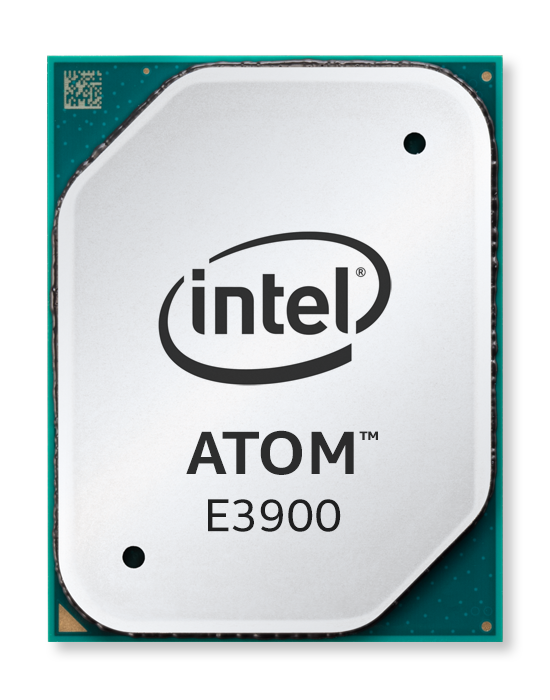Intel introduces Atom E3900 processors to power IoT


Intel on Tuesday officially unveiled its Atom Processor E3900 Series, designed to support the complex and rapidly-developing Internet of Things (IoT). The processors were announced during Intel vice president Jonathan Ballon's keynote at the IoT Solutions World Congress in Barcelona.
CEO Brian Krzanich earlier this year stressed his commitment to "transforming Intel from a PC company to a company that powers the cloud and billions of smart, connected computing devices."
While the company has taken an "end-to-end" approach to IoT, the E3900 series is specifically designed to power edge devices and fog computing.
"As you grow towards 50 billion connected devices at the edge, you have access to an enormous amount of data," Ken Caviasca, vice president of Intel's IoT Group and general manager of Platform Engineering and Development, told ZDNet. "Data processing could occur at multiple points -- at the core, fog, or back into the data center cloud."
While intensive data processing has typically happened in the cloud, Caviasca said that factors like the falling cost of sensing, and the reduced costs of connectivity and computing, could change that. "We feel that over the last five years the economics for turning on and unleashing the edge data has become very favorable," he said.
Caviasca looked at the vertical needs of industrial IoT, the transportation industry and retail, building on the strong customer relationships built with the deployment of the E3800. The E3900 series meets their needs with higher levels of security, determinism, and image and video processing power.
The E3900 has more than 1.7 times more computing power over the previous generation within the same thermal envelope, enabling the faster memory speeds and memory bandwidth needed for edge-to-cloud network computing. It's built into a compact flip chip ball grid array (FCBGA) and features 14 nanometer silicon technology.
The series also features Intel's ninth-generation graphics engine, which improves 3D graphics performance by 2.9 times over the E3800 series and supports as many as three independent displays. Additionally, the E3900 series has four vector image processing units, resulting in better visibility, quality video in low light, noise reduction, and color and detail preservation. The demand for high-performance video capabilities spans sectors, Caviasca said, with applications like digital security surveillance, industrial inspection cameras, and edge device data aggregation coming from automobiles.
To ensure faster connections that keep devices in sync, the processor series features Intel's Time Coordinated Computing (TCC) Technology. By synchronizing clocks inside the system on a chip (SoC) and across the network, TCC Technology can achieve network accuracy to within a microsecond. This opens a whole new market for Intel that the E3800 couldn't serve because of lack of determinism.
Meanwhile, the series has several enhanced and multiple new security features. For instance, the dedicated security coprocessor, the Trusted Execution Engine 3.0, effectively prevents malware or unauthorized software from tampering on low-level devices. It uses signing technology to make sure that with any software code change, the device won't boot. It also allows for monitoring of physical tampering of a platform. Meanwhile, Intel's Platform Trust Techcnology allows customers to store hardware secrets and keys in a more protected way.
The series also includes a wide range of features around securing and recovering an in-device system -- features that could stop denial-of-service attacks that occur due to mistakes like failing to change default passwords on network cameras.
"We're working with these technologies to make it more fail-proof as you implement a system," Caviasca said. The security features, he said, create a foundation for both ensuring privacy and securing against threats -- the two domains of security that matter as IT merges with OT.
Intel already has about 30 customers for the E3900 series ready for launch, with the largest design pipeline Intel has ever had for any Atom product in the IoT space. Its early customers include a few key auto OEMs, including Delphi, which is using the E3900 series for its integrated cockpit controller -- a software-defined cockpit with multiple higher resolution displays, intuitive voice recognition and other apps.
Hikvision -- which is already partnering with Intel-acquired company Movidius on smart surveillance cameras -- is also using the E3900 series for surveillance applications. Its network video recorder, for instance, is using the processor series to deliver low-cost video streams. The processors can handle all of the encoding and processing -- on the platform itself -- for 15 streams of 1080p at 30 frames a second coming in directly.